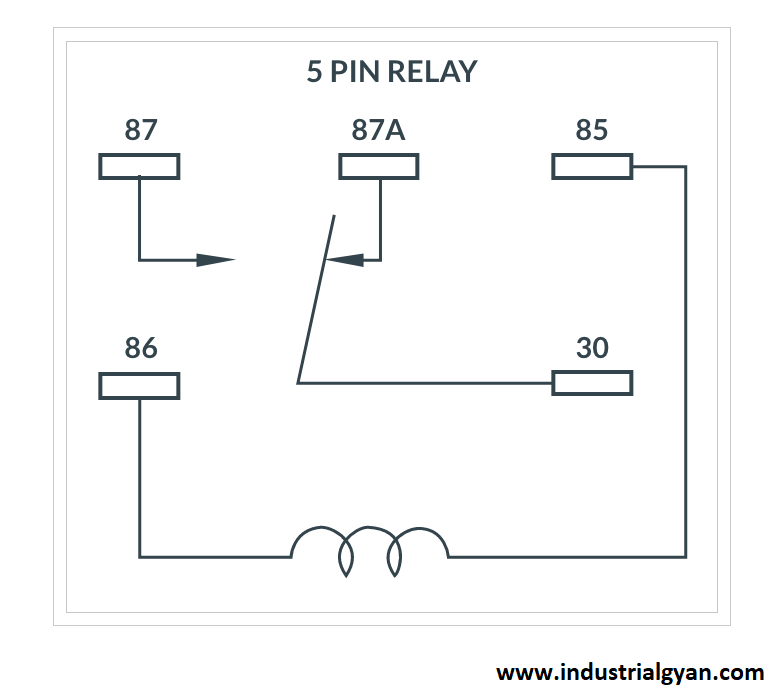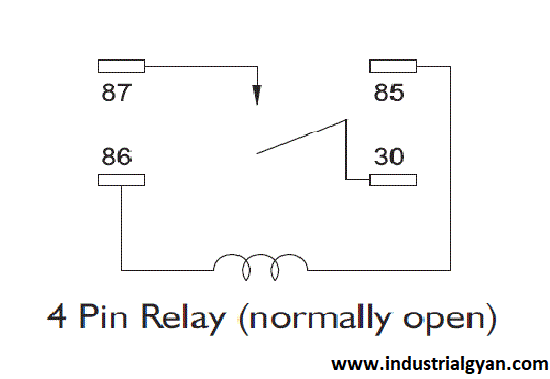Introduction
Welcome to our comprehensive guide on 5 pin relay wiring diagram. Whether you are an automotive enthusiast or a DIY enthusiast, understanding how a 5-pin relay works and how to wire it correctly is essential knowledge. In this article, we will provide you with a step-by-step guide, including detailed diagrams, explanations, and frequently asked questions to ensure you have a clear understanding of 5-pin relay wiring. So, let’s dive in!
Table of Contents
- Understanding Relays
- Components of a 5-Pin Relay
- Wiring a 5-Pin Relay
- Step-by-Step Guide
- Common Applications
- Troubleshooting
- FAQs
- Conclusion
Understanding Relays
Relays are electrical switches that allow low-power circuits to control high-power circuits. They play a crucial role in automotive and electronic applications, providing a reliable and safe way to control various electrical components. A 5 pin relay wiring diagram, as the name suggests, has five pins that serve different purposes and connections. By understanding the functionality of each pin, you can effectively wire a 5-pin relay for your specific needs.

Components of a 5-Pin Relay
Before we delve into the wiring details, let’s familiarize ourselves with the components of a 5-pin relay:
- Coil: The coil is responsible for generating the magnetic field that activates the switch mechanism inside the relay.
- Switch: The switch consists of a set of contacts that open or close depending on the coil’s energization.
- Common (COM): This pin is the common connection for the switch contacts.
- Normally Open (NO): The NO pin is disconnected from the COM pin when the coil is not energized.
- Normally Closed (NC): The NC pin is connected to the COM pin when the coil is not energized.
Understanding these components will greatly assist you in correctly wiring a 5-pin relay wiring diagram for your intended application.
Wiring a 5-Pin Relay
To wire a 5-pin relay, you need to establish the appropriate connections between the relay and the components you want to control. vibration motor The specific wiring configuration will depend on your application, but the general principles remain the same. Let’s explore the step-by-step guide to wiring a 5-pin relay.

Step-by-Step Guide
- Step 1: Identify the pins: Start by identifying the pins on your 5-pin relay. The pins are typically labeled or numbered, making it easier to understand their functions.
- Step 2: Connect the coil: Connect one end of the coil to a power source (usually 12V) and the other end to a ground connection.
- Step 3: Connect the NO pin: If you want the relay to activate when the coil is energized, connect the NO pin to the positive terminal of the component you wish to control.
- Step 4: Connect the COM pin: Connect the COM pin to the power source or battery positive.
- Step 5: Connect the NC pin: If you want the relay to deactivate when the coil is energized, connect the NC pin to the positive terminal of the component you wish to control.
- Step 6: Complete the circuit: Connect the other terminal of the component to be controlled to the ground or battery negative.
- Step 7: Test the wiring: Before finalizing the connections, test the wiring to ensure the relay operates as expected.
It’s important to note that the specific wiring configuration may vary depending on your application and the desired functionality of the relay.
Common Applications
The versatility of 5 pin relays makes them suitable for various applications. acsr conductor Here are some common applications where you may encounter a 5 pin relay:
- Automotive lighting systems
- Power windows and door locks
- Fuel pumps and fans
- Horns and sirens
- Starter motors
- Auxiliary power distribution
These are just a few examples, and the applications are not limited to this list. Understanding how to wire a 5 pin relay allows you to tap into its potential for controlling various electrical components.

Troubleshooting
While wiring a 5-pin relay is relatively straightforward, troubleshooting may be required if the relay does not function as expected. Here are a few common issues and possible solutions:
- No operation: Check the connections and ensure they are secure. Verify that the coil is receiving power and that the ground connection is intact.
- Constantly activated: Ensure that the coil is not constantly energized. Check the connections and make sure there are no short circuits.
- No continuity: If the switch contacts do not close, inspect the connections and look for any loose or damaged wiring.
By systematically diagnosing and addressing these issues, you can ensure the proper functionality of the 5-pin relay wiring diagram.
FAQs
What is a 5-pin relay?
A 5-pin relay is an electrical switch that utilizes a magnetic coil to control high-power circuits. It consists of five pins that serve different functions and connections.
How does a 5-pin relay work?
When the coil of a 5-pin relay is energized, it generates a magnetic field that activates the switch mechanism, allowing the contacts to open or close, depending on the design and application.
Can I use a 4-pin relay instead of a 5-pin relay?
While it is possible to use a 4-pin relay instead of a 5-pin relay, the wiring configuration and functionality may differ. It’s important to consult the relay’s datasheet and understand its pinout before making any substitutions.
How do I identify the pins on a 5-pin relay?
The pins on a 5-pin relay are typically labeled or numbered. Refer to the relay’s datasheet or 5-pin relay wiring diagram, and markings on the case to identify each pin’s function.
What are the common wiring mistakes to avoid when using a 5-pin relay?
Some common wiring mistakes to avoid when using a 5-pin relay include incorrect connections, loose wiring, inadequate grounding, and failure to properly insulate exposed wires. Double-checking the wiring diagram and conducting thorough testing can help avoid these mistakes.
Where can I buy a 5-pin relay?
You can purchase 5-pin relays from various automotive and electronics stores. Additionally, online marketplaces and specialized retailers offer a wide selection of 5-pin relays to choose from.
Conclusion
In conclusion, understanding how to wire a 5-pin relay is a valuable skill for any automotive or DIY enthusiast. By following the step-by-step guide and considering the specific requirements of your application, you can effectively control electrical components using a 5-pin relay. Remember to double-check your wiring, troubleshoot any issues, and prioritize safety throughout the process. Now that you have a comprehensive understanding of 5-pin relay wiring, you can confidently embark on your electrical projects.
You can follow us on LinkedIn

I am a highly motivated and skilled individual with a passion for Electrical engineering. I have 1 year of experience in Robotics and Electrical engineering, which has allowed me to develop a strong set of skills in PLC, Painting Robots, SCADA. I am a quick learner and am always looking for new challenges and opportunities to expand my knowledge and skills. I am a team player and enjoy working with others to achieve a common goal. Successfully completed many projects for a various clients in the automobile sector.
Thank You

